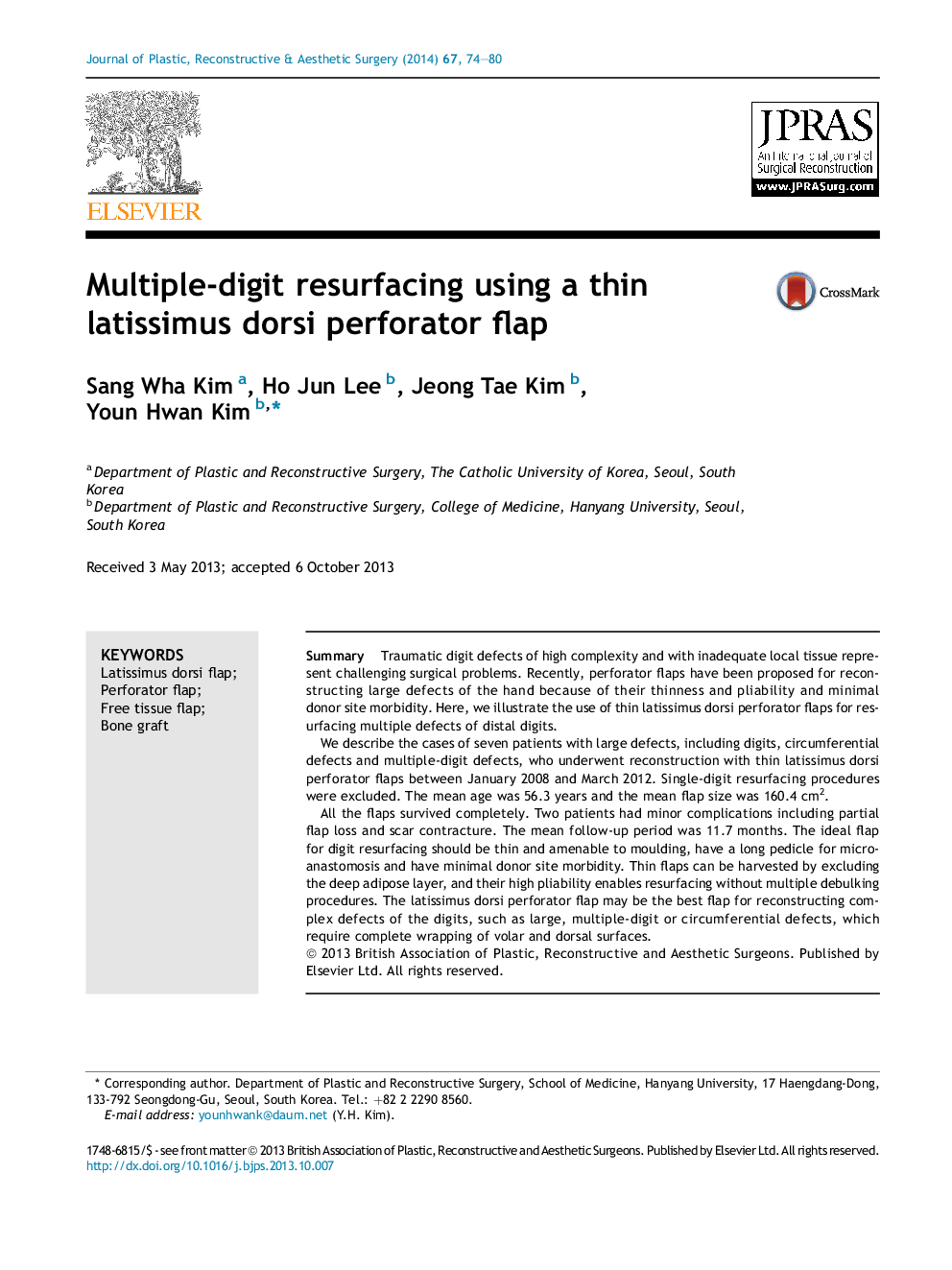| Article ID | Journal | Published Year | Pages | File Type |
|---|---|---|---|---|
| 4117762 | Journal of Plastic, Reconstructive & Aesthetic Surgery | 2014 | 7 Pages |
SummaryTraumatic digit defects of high complexity and with inadequate local tissue represent challenging surgical problems. Recently, perforator flaps have been proposed for reconstructing large defects of the hand because of their thinness and pliability and minimal donor site morbidity. Here, we illustrate the use of thin latissimus dorsi perforator flaps for resurfacing multiple defects of distal digits.We describe the cases of seven patients with large defects, including digits, circumferential defects and multiple-digit defects, who underwent reconstruction with thin latissimus dorsi perforator flaps between January 2008 and March 2012. Single-digit resurfacing procedures were excluded. The mean age was 56.3 years and the mean flap size was 160.4 cm2.All the flaps survived completely. Two patients had minor complications including partial flap loss and scar contracture. The mean follow-up period was 11.7 months. The ideal flap for digit resurfacing should be thin and amenable to moulding, have a long pedicle for microanastomosis and have minimal donor site morbidity. Thin flaps can be harvested by excluding the deep adipose layer, and their high pliability enables resurfacing without multiple debulking procedures. The latissimus dorsi perforator flap may be the best flap for reconstructing complex defects of the digits, such as large, multiple-digit or circumferential defects, which require complete wrapping of volar and dorsal surfaces.
